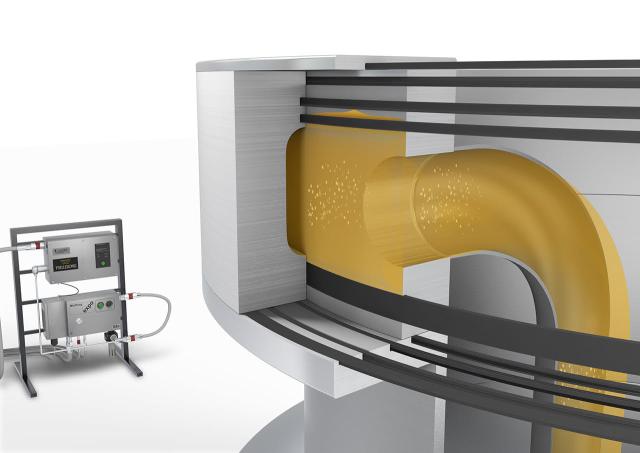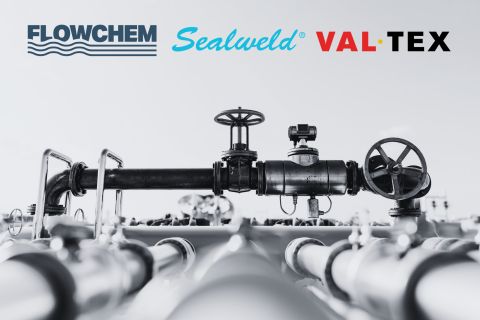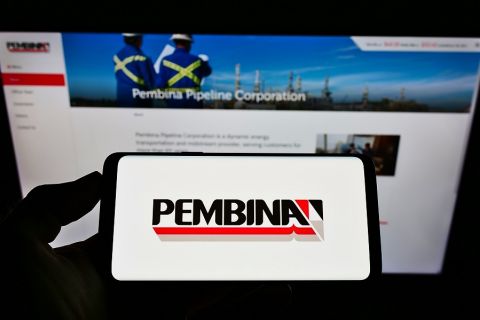
Trelleborg Sealing Solutions launched SealWelding technology allowing seals to be welded in-situ on an FPSO platform. (Source: Trelleborg Sealing Solutions.)
In an industry where one misstep can cost an operator hundreds of thousands if not millions of dollars, ensuring robust asset integrity and maintenance are key factors to safeguard smooth operations. The global market for FPSOs is set to witness robust growth owing to growing interest of investors toward production from deep and ultra-deepwater oil reserves. Worldwide FPSO market is projected to surpass $30 billion by 2025, as reported in a recent study by Global Market Insights Inc.
Aggressive offshore environments, vessel motions and production demands can prove to be a challenge for maintenance of floating and subsea facilities, according to Allessandro La Grotta, asset integrity lead at Advisian.
“Inspection and maintenance programs play a key role in managing the integrity of the asset; however ineffective inspection and maintenance regimes not only negatively impact the safety of the asset but can introduce onerous and unnecessary costs,” she said.
MORE TECHNOLOGY: Emerging Tech: Seismic In The Cloud
If FPSOs are shut down and moved onshore for maintenance, costs can shoot up quickly. The FPSOs swivel stack ensures that all fluids, controls and power are transferred safely from the geostationary components to the rotating vessel and its processing plant. Seals are a critical element of the swivel stacks that ensure efficient and safe operations. A leaky seal in an FPSO’s swivel stack at one time required shutting down production and going ashore to replace the seal. However, a few years ago, Trelleborg Sealing Solutions launched SealWelding technology allowing seals to be welded in-situ on an FPSO platform, eliminating the need for it to disconnect and return to shore. This method involves welding a polytetrafluoroethylene seal around the swivel and removal of the failed seal.
“Because every second of prevented downtime adds to the bottom line for the operator, eliminating the travelling time required to return an FPSO to shore for a seal replacement could provide huge financial savings,” said Henk-Willem Sanders, technical manager of oil and gas and FPSO focus group leader for Trelleborg Sealing Solutions.
RELATED ARTICLE: Offshore Faces Its ‘Prove It’ Moment
“Prior to introduction of our technology, if there was a seal failure, FPSO units had to be moved onshore to replace swivel stack seals where all components would be disassembled, and the entire process could take six to eight weeks with a loss of approximately $200 million,” he said.
Following the launch of the sealing solution, Trelleborg also opened a dedicated, climate-controlled swivel stack inspection facility in the Netherlands for the validation of custom seals for the oil and gas market.
The SealWelding technology has been in the market for five years and has been updated with increased capacity, Sanders said. “The technology is providing improved flexibility and quicker response rate for our customers, thereby further reducing downtime.”
Sanders explained that a client operating offshore Canada was transporting FPSOs to Ireland for seal replacements, costing the company around $2 million dollars a day. The SealWelding technology slashed downtime, replacing seals on the FPSO unit, thereby eliminating the need to shut down and transport the vessel.
“In a project offshore Indonesia, our clients complained that their swivel stacks were down and we installed seals that helped them start production in time,” he added.
Offshore New Zealand in a smaller oilfield, an operator had to shut down production every three to four months because rubber seals were failing and the operator was forced to transport the FPSOs onshore for maintenance. Trelleborg Sealing Solutions implemented the seal technology in the project and the oil field has been in production for four years with no downtime because the seals are replaced on the production site, saving $60,000 per day.
“We are developing this technology further with the help of a growing team,” Sanders added. “We’re also working on making our equipment compact and more flexible to move out so it can be flown into the FPSOs by helicopters instead of using supply boats, thereby reducing time. In addition, we are expanding the quality and range of materials used in the seals.”
Recommended Reading
Diamondback, Verde Plan Converting Permian Natgas to Gasoline
2024-02-13 - Diamondback Energy subsidiary Cottonmouth Venture LLC has entered into a joint development agreement with Verde Clean Fuels to build a natural gas-to-gasoline facility in the Permian Basin.
ONEOK CEO: ‘Huge Competitive Advantage’ to Upping Permian NGL Capacity
2024-03-27 - ONEOK is getting deeper into refined products and adding new crude pipelines through an $18.8 billion acquisition of Magellan Midstream. But the Tulsa company aims to capitalize on NGL output growth with expansion projects in the Permian and Rockies.
SCF Acquires Flowchem, Val-Tex and Sealweld
2024-03-04 - Flowchem, Val-Tex and Sealweld were formerly part of Entegris Inc.
Enbridge Closes First Utility Transaction with Dominion for $6.6B
2024-03-07 - Enbridge’s purchase of The East Ohio Gas Co. from Dominion is part of $14 billion in M&A the companies announced in September.
Pembina Cleared to Buy Enbridge's Pipeline, NGL JV Interests for $2.2B
2024-03-19 - Pembina Pipeline received a no-action letter from the Canadian Competition Bureau, meaning that the government will not challenge the company’s acquisition of Enbridge’s interest in a joint venture with the Alliance Pipeline and Aux Sable NGL fractionation facilities.





